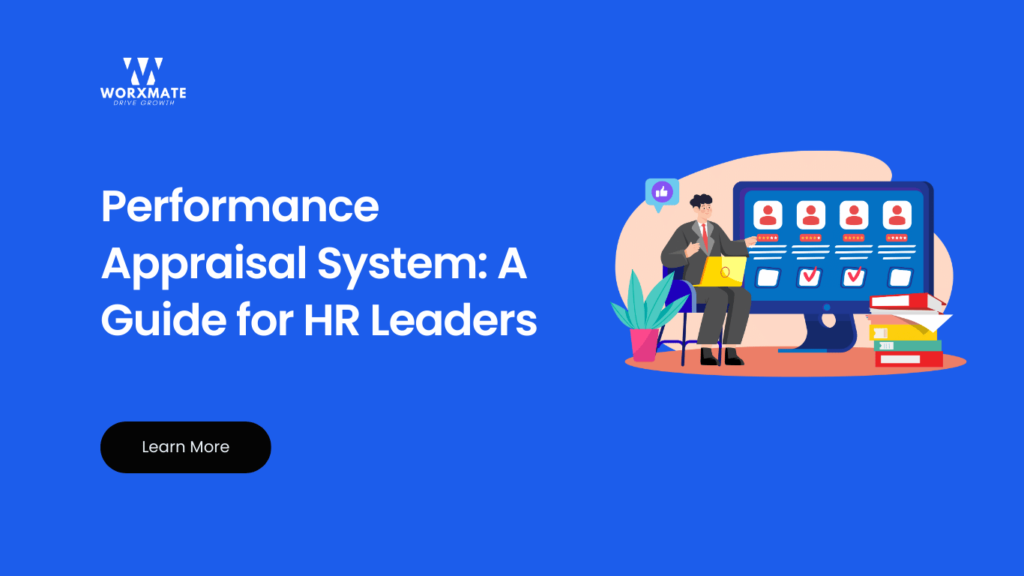Without a structured appraisal system, performance assessments can be biased and inconsistent, leading to frustration among employees. How can HR leaders implement a fair, data-driven evaluation method?
Companies now use performance reviews as a strategic tool. Employees benefit since it provides them with the opportunity to assess their professional development and strengths and limitations.
Naturally, this results in the organization receiving the information it requires to oversee its people resources and achieve its goals more effectively. It’s a difficult process that calls for a well-defined approach and few resources. However, it’s worth the effort because it allows you to maximize the organization’s most valuable asset- its people.
What is performance appraisal?
An employee’s performance is reviewed on a regular basis through a set of actions called a performance appraisal. Its main objective is to evaluate a person’s performance in relation to the position for which they were employed.
It entails workers speaking with their immediate bosses one-on-one. The two talk about the future roadmap, prospective improvement areas, strengths, and limitations during these talks.
It enables staff members to obtain a better understanding of their performance in comparison to the company’s expectations. Employers also have a clear picture of how relevant and diverse their workforce is.
Employers can use the performance appraisal process as a crucial tool to make sure their staff members are fulfilling their objectives and expectations.
Additionally, it gives workers a chance to evaluate their work and pinpoint areas in need of development. Employees’ hard work and dedication can be acknowledged and rewarded through the performance appraisal process, which is crucial for assessing performance.
Understanding the Performance Appraisal Goals
The following are the main goals of performance appraisals:
- Increasing performance on both an individual and organizational level by establishing clear objectives and expectations
- Finding areas of strength and room for development to direct staff
- Using performance data to inform decisions about retention, promotion, and pay
- Matching personal aspirations with more general organizational goals Enhancing the exchange of information between supervisors and staff
- Firms must implement effective performance management to involve, expand, and ultimately keep top personnel.
What benefits can performance appraisals offer?
Systems for performance reviews are essential for promoting employee growth, performance, and corporate success.
Performance appraisal systems support a corporate culture that prioritizes involvement and continual improvement by identifying development needs, identifying accomplishments, setting targets that are in line with broader business objectives, and offering constructive criticism.
Data from performance appraisal systems is examined to find patterns and trends where the business may improve. These insightful observations support ongoing efforts at improvement as well as data-driven, well-informed decision-making.
Read More: 7 Ways to Foster a Growth Mindset Among Employees
Case Study- Baker Tilly’s Performance Management Overhaul
Baker Tilly, a leading CPA firm, encountered significant challenges in implementing a structured performance management system. Prior to the overhaul, the firm struggled with incomplete performance reviews, inconsistent feedback, and low engagement in the appraisal process.
To address these issues, Baker Tilly adopted Quantum Workplace’s performance management solutions, which introduced a streamlined and data-driven approach to employee evaluations.
The results were transformative:
- Performance review completion rates surged from 70% to 100%.
- Employees received more structured and constructive feedback, leading to improved engagement.
- The organization benefited from better alignment between employee performance and business goals.
This case underscores the importance of effective change management and the adoption of user-friendly appraisal systems. By leveraging the right technology and fostering a culture of continuous feedback, Baker Tilly successfully enhanced its performance management process, demonstrating how structured appraisals can drive both employee and organizational success.
✅ Ready to enhance your performance appraisal process and boost employee engagement?
Download our Performance Appraisal Template now to bring structure, fairness, and clarity to your review system.
Disadvantages of Performance appraisals
Performance appraisals have the potential to inspire and involve your team, but they can also have unfavorable effects on you. This is particularly true if the employee’s expectations are not met by the appraisal system. Improper handling of the performance review might result in:
-
Demotivation
Badly conducted performance reviews can not only demotivate employees, but they will also cause them to leave the company.
-
Trust Issues
Employees may feel underappreciated if they are criticized for being unfair, and partial, without any connection to their real performance. This further fuels discontent and lowers morale. This could intensify the team’s already-existing rumors, which could result in decreased staff involvement or even a decline in the team’s overall performance.
-
Concentrate Only on Quantitative Profits
When assessing an employee’s performance, many companies use quantitative data. Employees feel that they are merely numbers rather than distinctive people who contribute to success. Employees may become demotivated as a result of this instead of seeing that it all came down to being good team players.
Such evaluations must be conducted with tact. Success would be ensured by an evaluation system that takes these cultural quirks into account without sacrificing equity.
Stages of the performance appraisal procedure
- Set performance benchmarks
- Share the performance criteria
- Assess real performance
- Evaluate performance standards against actual performance.
- Talk about the findings and provide comments.
- Choose a plan for follow-up
Performance appraisal types
Choosing the best performance appraisal system is crucial to fostering employee development and a productive workplace. Here are a few well-liked techniques to think about:
-
360-degree appraisal
A 360-degree appraisal provides a thorough view of an employee’s performance by collecting input from coworkers, managers, subordinates, and even customers.
-
Management by Objectives (MBO)
MBO emphasizes managers and staff working together to establish specific, quantifiable goals and evaluate performance according to how well these goals are being met.
-
Peer Assessment
By encouraging colleagues to assess one another’s work, this approach promotes cooperation and teamwork among coworkers.
-
Self-Assessment
Workers can gain confidence and a feeling of control over their performance by considering their own accomplishments, difficulties, and potential growth areas.
-
Rating Scales
This method regularly rates an employee’s performance in a number of areas, including teamwork, communication, and work quality, using pre-established scales.
-
Critical Incidents
Employers can spot trends and quickly resolve any problems by concentrating on particular, noteworthy instances in a worker’s performance.
Remember to approach performance reviews with compassion and understanding, establishing a nurturing atmosphere that encourages staff development.
In conclusion
There is more to performance appraisals than meets the eye. They give decision-makers useful data on worker performance, which they can use to determine how best to distribute funds, incentives, pay increases, and promotions. This data is also essential for identifying areas that want development and those that are functioning properly.
Comprehensive performance appraisal systems that enable businesses to maximize the use of the data gathered should be developed and designed by HR departments. In this manner, they assist businesses in fostering employee development, improving decision-making, and eventually increasing organizational performance.
Ready to enhance your performance appraisal process and drive employee growth? A well-structured system can boost engagement, productivity, and retention.
Explore how Worxmate’s Performance Management Software can help you streamline appraisals and make data-driven decisions.



